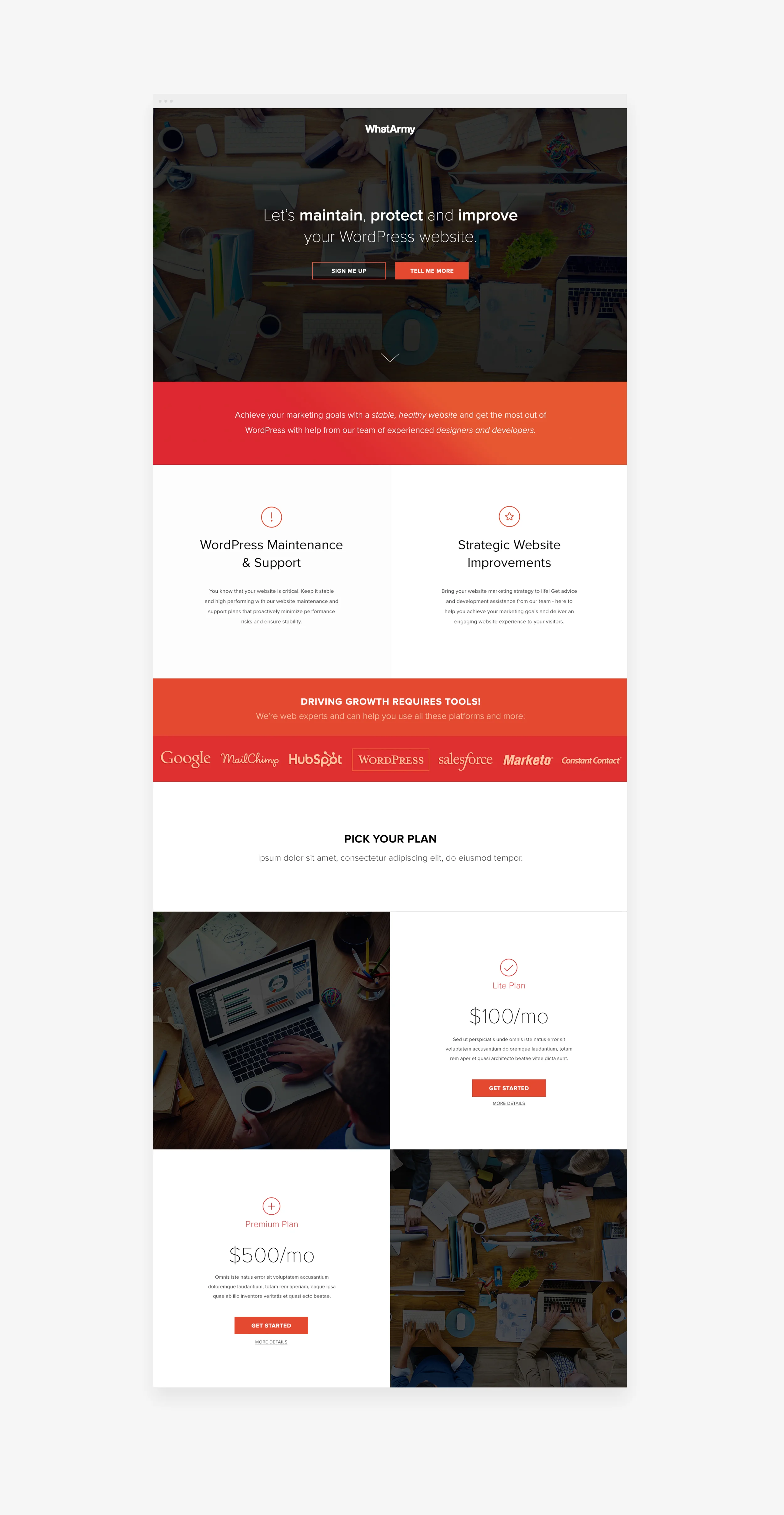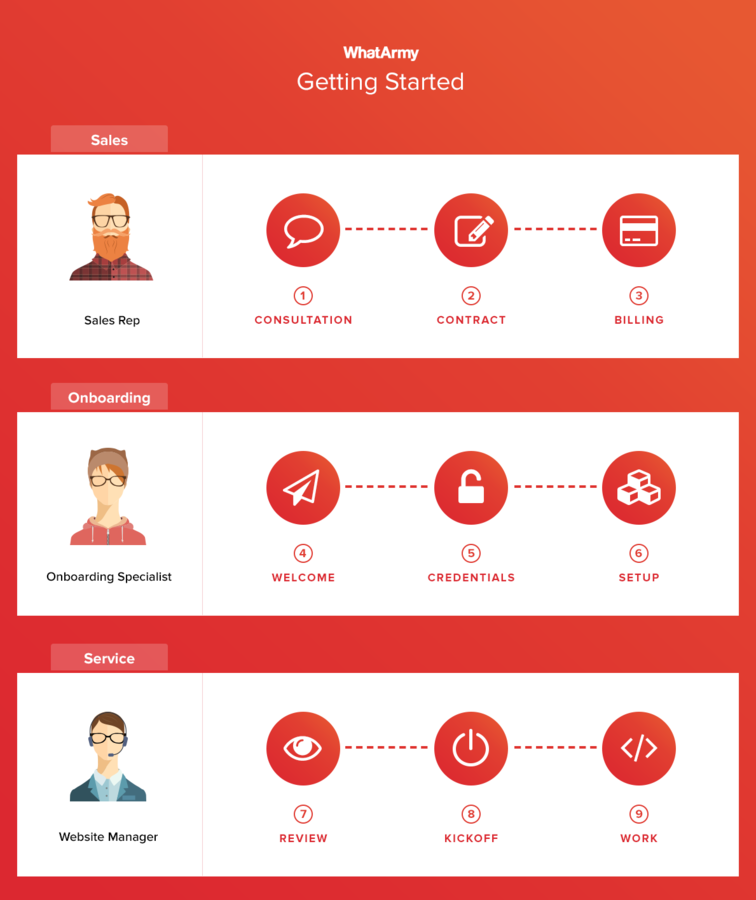Whatarmy
A better way for businesses to keep their websites healthy
Overview
WordPress is the most popular content management system in the world—yet many businesses struggle with managing their WordPress website. At WhatArmy, we set out to fix this problem, building a new kind of web agency that is hyper-focused on the long-term life cycle of a website. Our solution was a productized service for ongoing support, maintenance, and improvement.
In the first four years, we built our bootstrapped startup into a million-dollar business with eight full-time employees and over 50 active clients. The company is still running smoothly today as it approaches its tenth year.
Role
As a founding member, I helped design a growth strategy that defined our agency in a competitive industry. As Creative Director, I led internal and client-facing design projects to produce deliverables that included visual identity systems, web designs (WordPress, Shopify), marketing integrations (HubSpot, Salesforce), and a digital playbook for internal operations. After four years in a leadership role, I continued to contribute as a board member, overseeing changes as the team and business needs evolved.
Productized Serivce
A big challenge we faced was that our initial service set was broad and often difficult to explain. We needed to define and communicate the services in a way that our core audience would clearly understand. After some early failures on this front (e.g. the elephant image below) I led an effort to refocus and productize our services. This started with research and feedback from our existing customer base, which I used to inform our new product vision (graphic below).
onboarding
Another challenge was our convoluted onboarding process. As with many service agencies, we struggled with onboarding for the first few years. The process took too long, involved too many points of contact (between sales, onboarding, and service), and we were terrible at setting expectations. The customer experience was suffering. To correct this, I led a sprint to translate our new product vision into a simplified, 9-step onboarding flow (graphic below). It was a major improvement that led to happier customers and better service outcomes.









